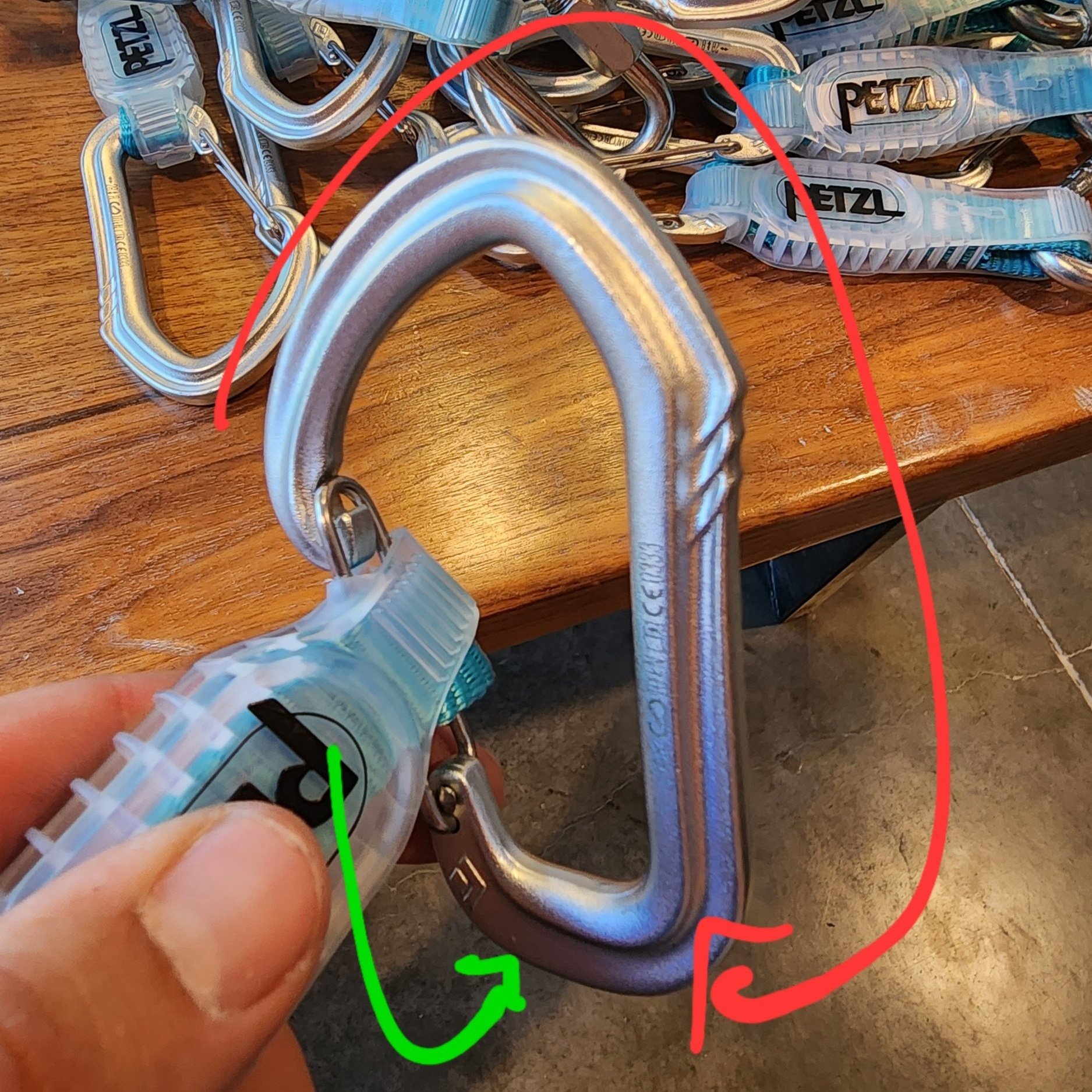Creating quickdraws the easy way
First off, exercise extreme caution when constructing quickdraws. Sadly, people have died from incorrectly set up quickdraws. Make sure you capture both the keeper (aka string) and and the load-bearing sling with the rope-side carabiner. This is the same reason you shouldn’t use tape or rubber bands on open slings.
You are likely aware dogbones have two sides, one is open, allowing for a floppy bolt-side carabiner, and one has a keeper designed to keep the rope-side carabiner in an optimal clipping position. Usually, the bolt-side carabiner has a straight gate and the rope-side has a bent gate to facilitate clipping. When replacing the dogbone or rope-side carabiner, knowing the correct way to create the quickdraw saves you both time and effort.
Go the short way around.
The goal is to get the dogbone opposite of the basket. While you may intuitively clip the dogbone with the nose of the carabiner like you typically do when attaching any carabiner, there’s a better way to do it. Instead, place the dogbone on the gate of the carabiner and pull it towards the hinge, opposite the basket. This way, you minimize the distance around the carabiner, plus the basket tends to be the thickest and most challenging part to force the dogbone around.
Taking the red path is harder and longer than the green path, despite being the natural way we clip carabiners.
The wrong way: long and laborious
The easy way: weird and wonderful
